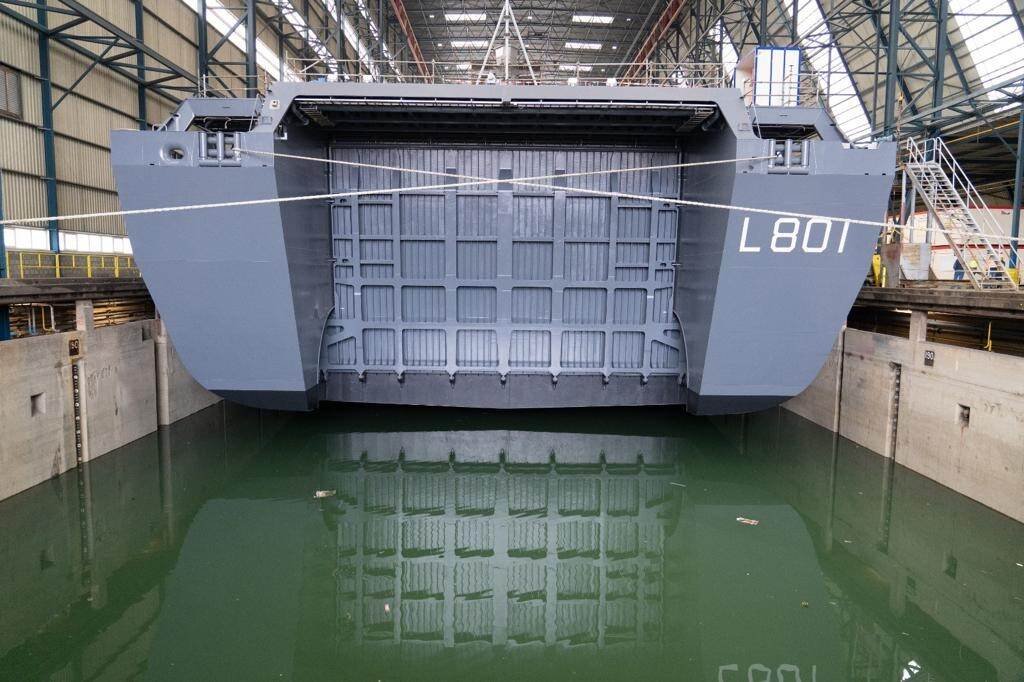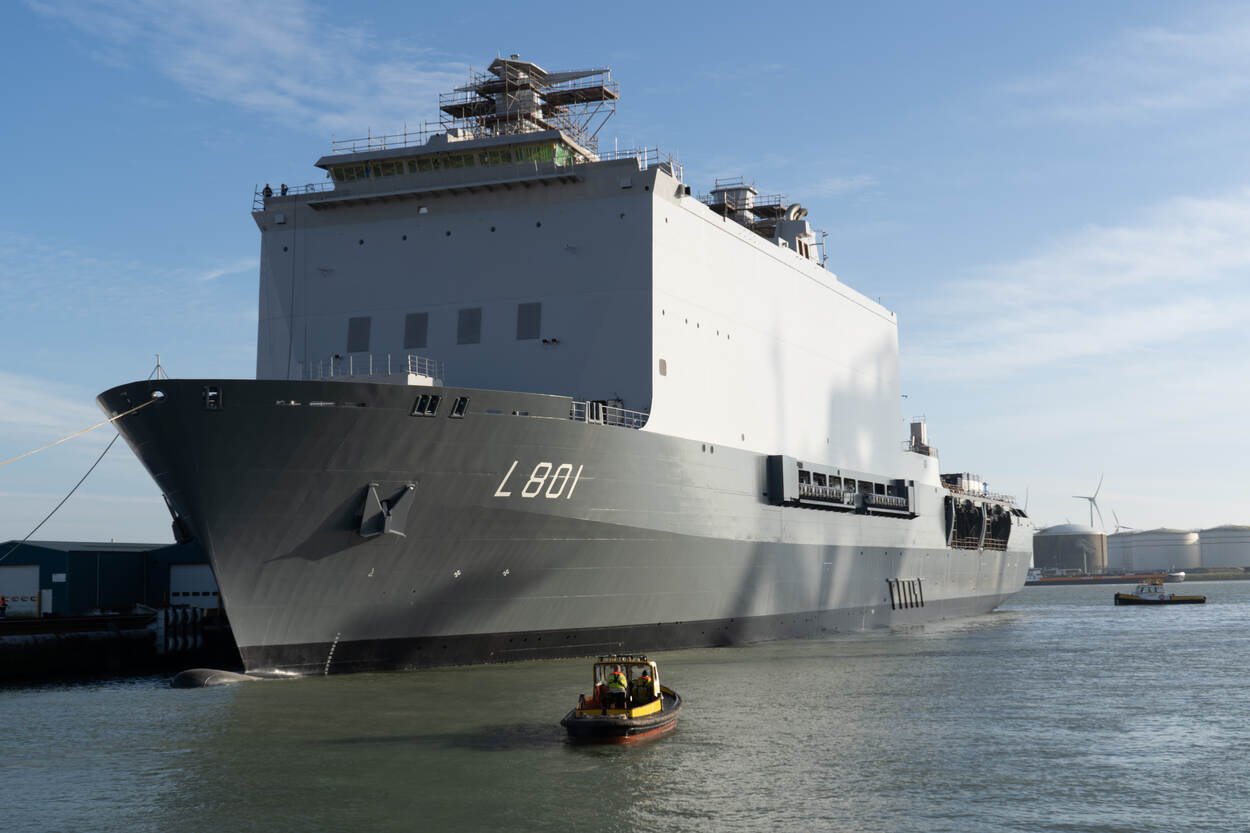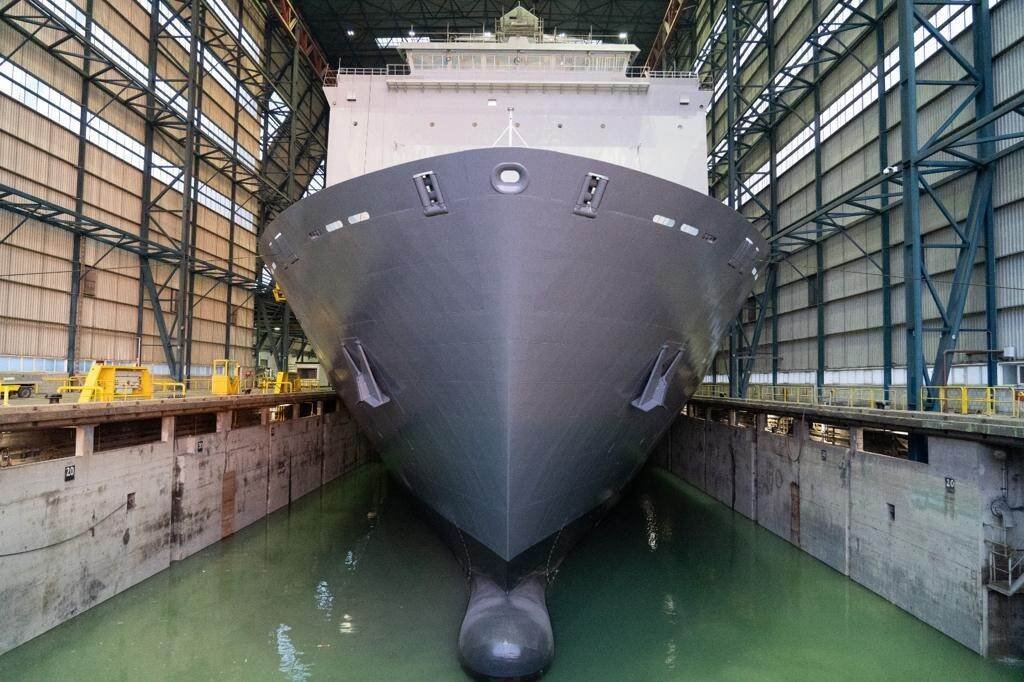Just a little while and then one of the largest ships in the navy will return to the bosom of the maritime armed forces, the port of Den Helder. With DMO as final responsible, the transport colossus Johan de Witt is currently simultaneously carrying out a renovation and major maintenance at Damen Naval in Vlissingen. In April 2023, the ship will moor again in Den Helder and will enter the final phase of the project. At the beginning of 2024, the Johan de Witt will be ready for naval operations around the world as usual.

What has been happening on the Johan de Witt since the start of the project on March 1 of this year may have some name. As with so many mid-life ships, it is undergoing a major refurbishment under the name of Midlife Update (MLU) as well as a ‘100,000 mile’ service or Appointed Maintenance (BO). “After that, the Johan de Witt will be operational again for fifteen to twenty years”, reports project leader MLU on behalf of DMO, captain-lieutenant at sea of the Technical Service Olaf van Kampen. It is up to system integrator Ron van der Windt to link the systems so that, in his words, they ‘hit the mark at the right time’.

In the Midlife Update, all systems will be replaced that lose their efficiency due to rapidly advancing technology and require more and more maintenance. The same applies to installations that no longer comply with laws and regulations. The hospital of the Johan de Witt, for example, is largely ‘digitized’. “Sockets to connect a radio, for example, are disappearing. Nowadays you listen to music on your smartphone, and there is also internet on board,” Van Kampen explains.

The refrigeration and freezing installations will also be updated, as will the laundry and consoles on the bridge, or the workplaces for operators . They get state-of-the-art software and hardware. The technical and command center will also be redesigned. “They will be completely redesigned,” says Van Kampen.
Another mega job concerns the complete replacement of the sprinkler system. To this end, 6.2 kilometers of water pipes will be replaced right through the ship and five thousand square meters of ceiling will be temporarily removed. This means that no fewer than 4,200 new pipe sections can be installed. “In terms of planning, the sprinkler system is a priority job,” emphasizes Van der Windt.
The ventilation system is also being addressed. This will be cleaned and equipped with a new method to prevent the intake of ‘own’ exhaust gases. Because until now that happened when the wind was ‘wrong’. The broom also goes through the ICT system and the satcom equipment, both of which were still running on outdated and less secure operating systems. “Good internet is also essential for the crew of a naval ship. That’s just a requirement. Incidentally, we separate the internet from the other systems to prevent hacking ,” says Van der Windt.
All told, the MLU includes approximately 80 minor and major modifications involving the replacement of approximately 40 miles of new power and data cables. Two more things worth knowing: the MLU has so far gobbled up 40,000 liters of paint, the jobs are being carried out by a team of approximately 250 Damen Naval workers and the 60 subcontractors involved in the project. At peak times, about 450 people work on the Johan de Witt every day.

And then the ‘100,000 mile service’ that runs parallel to the MLU. A list with 1200 points is tallied. What about the propulsion installations and piping? What condition are the hangar door, internal lifts, shut-off valves and flaps in? Too many to list them all. “Together with the Department of Material Maintenance (DMI), we check whether and where corrections are necessary,” summarizes Van Kampen.
Ten months after the start of the monster project, everything is going fairly smoothly, he and Van der Windt take stock. “We have to coordinate a lot, with Damen as the ‘major controller’ and DMO as the person with ultimate responsibility. In doing so, we run into unexpected matters that are also complex. And it all takes time. Building a new ship is easier, so to speak. On the other hand, the project gives us a lot of energy.”
Van der Windt: “As in every monster job, some things don’t run smoothly. But thanks to the good cooperation, things are going fairly smoothly.” As far as he and Van Kampen are concerned, there is no doubt: the Johan de Witt will be ready for action again at the beginning of 2024. “Everyone is going for it.”
Johan de Witt is run by 155 crew members. In addition, there is room for approximately 400 ‘departures’ such as marines, helicopter crews or a medical team. Some more figures: length approx. 176 meters (two football fields long), width 30 meters, draft 6.5 meters, height 45 meters. Holds 4 to 6 Marine Corps landing craft and 6 Cougar/NH-90 helicopters.

